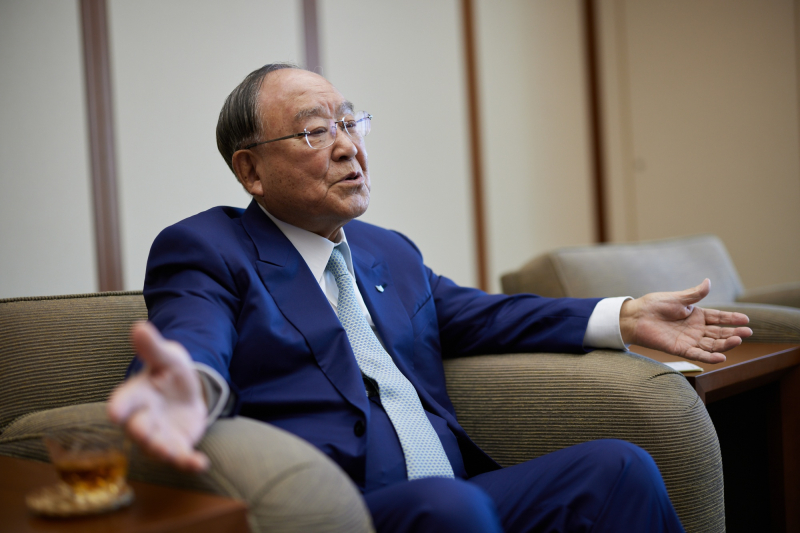Canon is half a step away from implementing a quiet revolution in the semiconductor production market – the CEO of the Japanese tech giant said that the new machines for producing chips will be an order of magnitude cheaper than the most technically advanced EUV systems of the Dutch ASML, costing hundreds of millions of dollars each, which now play a key role in technology. confrontation between the USA and China.
We are talking about the same FPA-1200NZ2C machines based on Nanoimprint lithography (also known as nanoprinting lithography, or embossing) – in short, this is a more affordable alternative to the already familiar and proven photolithography, which is basic for the production of semiconductor devices.
Canon CEO Fujio Mitarai during an interview in Tokyo on October 30. Photo: Shoko Takayasu/Bloomberg
“The price will be an order of magnitude lower than ASML's EUV machines,” Fujio Mitarai, 88, who is serving his third consecutive term as Canon's president since retiring from operations in 2016, said in a recent interview. At the same time, he noted that the final decision on the price has not yet been made.
Currently, only a few major players can afford to invest in expensive Dutch equipment, which is closely monitored because of its leading status in the technology supply chain. And on the one hand, Canon has a good chance of ending the monopoly of the Dutch ASML, whose equipment is used by TSMC and Samsung to produce the most advanced chips – the same 3nm Apple A17 Pro (iPhone 15 Pro and iPhone 15 Pro Max). Canon's new lithography presses represent a potential opportunity to reduce dependence on EUV technology and a chance for smaller players to compete for their place in the highly competitive semiconductor market.
On the other hand, as mentioned earlier, ASML does not export equipment to China due to current sanctions – the United States is cooperating with Japan and the Netherlands to prevent China from gaining access to advanced semiconductor technologies. At the same time, Bloomberg recently reported that China's SMIC used equipment from the Netherlands' ASML to produce an advanced processor for a Huawei smartphone. So far, Nanoimprint lithography technology, which does not involve photolithography at all, is not subject to sanctions. At the same time, Canon is fully aware of the high likelihood of introducing export restrictions in order to further restrain China's military-technological progress.
“I understand that exporting anything beyond 14nm technology is prohibited, so I don’t think we will be able to sell (equipment to China).”
Fudio Mitarai,
CEO and President of Canon
Vacancies
HTML Coder P2W, Kiev
Learning & development manager (Product Tutor) Orderry, Kiev
Product Marketing Manager Orderry, Kiev
The key difference with Nanoimprint lithography is the use of pressure (instead of light) to create the desired pattern on the silicon wafer. New Canon machines are capable of producing chips that are identical to 5nm “stones” produced using more advanced deep ultraviolet (EUV) lithography technology, which is dominated by the current leader and de facto monopolist, the already mentioned ASML Holding NV. Already in the next generation, Canon plans to jump to 2 nm (now TSMC and South Korean Samsung, the two largest semiconductor manufacturers, are aiming to start producing 2 nm products in 2025) and significantly improve their own positions.
Course Strategic Marketing. From chaos to systemic marketing, Tetyana Lukinyuk, B2C director at Kyivstar, former CMO at Coca-Cola, Mars Ukraine and general director at Red Bull Ukraine. View information about the course
Canon is building its first new lithography equipment plant in two decades in Utsunomiya, north of Tokyo. The equipment will begin rolling off the new assembly line in 2025. If you missed the October publication on Canon's commercialization of Nanoimprint lithography technology and its potential impact on the global market in the context of the intensifying technological confrontation between the US and China, you can catch up and fill in the knowledge gaps.

